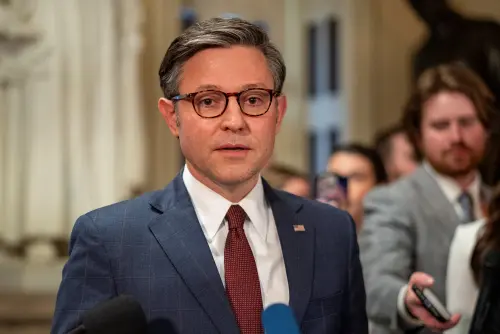In the United States, the design and execution of foreign policy sits overwhelmingly in the executive branch, a point that hasn’t been lost on observers who are increasingly nervous about the prospect of a Donald Trump administration. Not only is foreign policy concentrated in a lateral sense between the branches of government, but it’s concentrated vertically in the sense that domestic constituencies tend to be less influential on foreign policy than they can be on other policy areas.
However, U.S. policy on Cuba stands out in this regard: The Cuban-American voting bloc—mainly concentrated in the big swing state of Florida—is politically and electorally important in U.S. presidential elections and has historically been very vocal on Washington’s policy towards Cuba. That constituency, which is increasingly characterized by the younger generation’s broad support for a U.S.-Cuba rapprochement, has had an outsized impact on U.S. policy. It will likely be a key factor shaping U.S. policy towards the island during the next administration, too.
Shifting sands
The U.S.-Cuba rapprochement is one of the biggest bets of Obama’s foreign policy and will be a key part of his legacy. While many worry—with good reason— that the Obama administration may have given up too much for too little (by way of progress on human rights and democracy on the island), my opinion is that we should judge the trip and its aftermath by its ability to expand the coalition—in both countries, and throughout the Americas—of supporters of an open, democratic, and prosperous Cuba. It is also true that in the aftermath of the presidential visit, you will need two to salsa, and that Cuba can easily derail the progress achieved so far if it feels threatened or it’s in its interest to do so.
Much has been written—and will continue to be written—about the visit itself and about what it is at stake with regards to human rights, democracy, and the budding civil society in Cuba. The visit has also been used thoughtlessly by Cuban-American (and other) senators to block the ratification of proposed U.S. ambassador to Mexico. But a perhaps understudied angle to the U.S.-Cuba rapprochement is its intermestic nexus between changing demographics in the United States, U.S. electoral politics, and policy implications for the next occupant of Washington’s Oval Office.
The Cuban-American community today represents 3.5 percent of all Latinos in the United States and less than 1 percent of the overall American population. But in Florida—an important swing state in presidential elections—they are 6.5 percent of the total and 34 percent of the population of the electorally-significant Miami-Dade county.
Traditionally, Cuban-Americans have been a powerful voting bloc in the Republican Party (partly a legacy of President Kennedy’s Bay of Pigs fiasco in 1961 and, more broadly, because of Republican ideological support for free markets and individualism). But in 2008, then-Senator Obama—shepherded by a group of prominent Cuban-American businessmen as well as Miami (and Florida more broadly) Cuban-American politicians—won a record percentage of the Cuban-American vote. That was key to him winning Florida, a traditionally Republican state, both that year and in 2012. Recent polls show that demographic changes in Florida are blowing in the Democratic Party’s favor, not only with the Cuban-American community but also with the Latino community more generally. Today, Puerto Ricans, Mexicans, and Dominicans combined (and in that order) are more numerous than Cuban Americans in Florida. They tend to vote Democratic, which will also have a profound impact on how a hardline policy towards Cuba and the embargo plays—and doesn’t play—a domestic political and electoral role. It will also affect the political-electoral calculus that goes along with this demographic shift.
Today’s Cuban Americans in Florida are not the same Cuban exile community that they were 50 years ago.
Today’s Cuban Americans in Florida are not the same Cuban exile community that they were 50 years ago—and this means they tend to think differently about the island, about U.S. policy, and about party lines. Cuban-American support for the U.S. embargo has been steadily falling: from 87 percent in 1991 to 48 percent in 2014. Generational change has brought ideological change among the Cuban-American community. The children and grandchildren of first-generation Cuban exiles are less dogmatic and more open to reconsidering longstanding (until now) U.S. policy toward Cuba. Relatedly, the Cuban-American business community is increasingly drawn from the younger guard—they tend to have different positions from their parents and grandparents with regards to dialogue with the island and eventual commercial ties.
The coming of age—and associated ideological shift—of Cuban Americans portends important policy changes. The new Cuba policy lobby in Washington is likely to have a very different outlook and set of policy asks than its predecessors. Rather than push for confrontation with or isolation of the government in Havana, it will likely push for support, cooperation, and funding for Cuba’s economic, social, and political development.
So, Cuba policy is an area where domestic demographics and politics could have an outsized impact on U.S. foreign policy—and, by extension, on its role in the hemisphere. This is essential to recognize as we look ahead to the next U.S. administration and consider the policy pressures it is likely to face and the range of action it is likely to have.
This post is adapted from an op-ed published in the Spanish-language newspaper El Universal.



Commentary
The shifting domestic landscape behind the White House’s Cuba policy
March 29, 2016